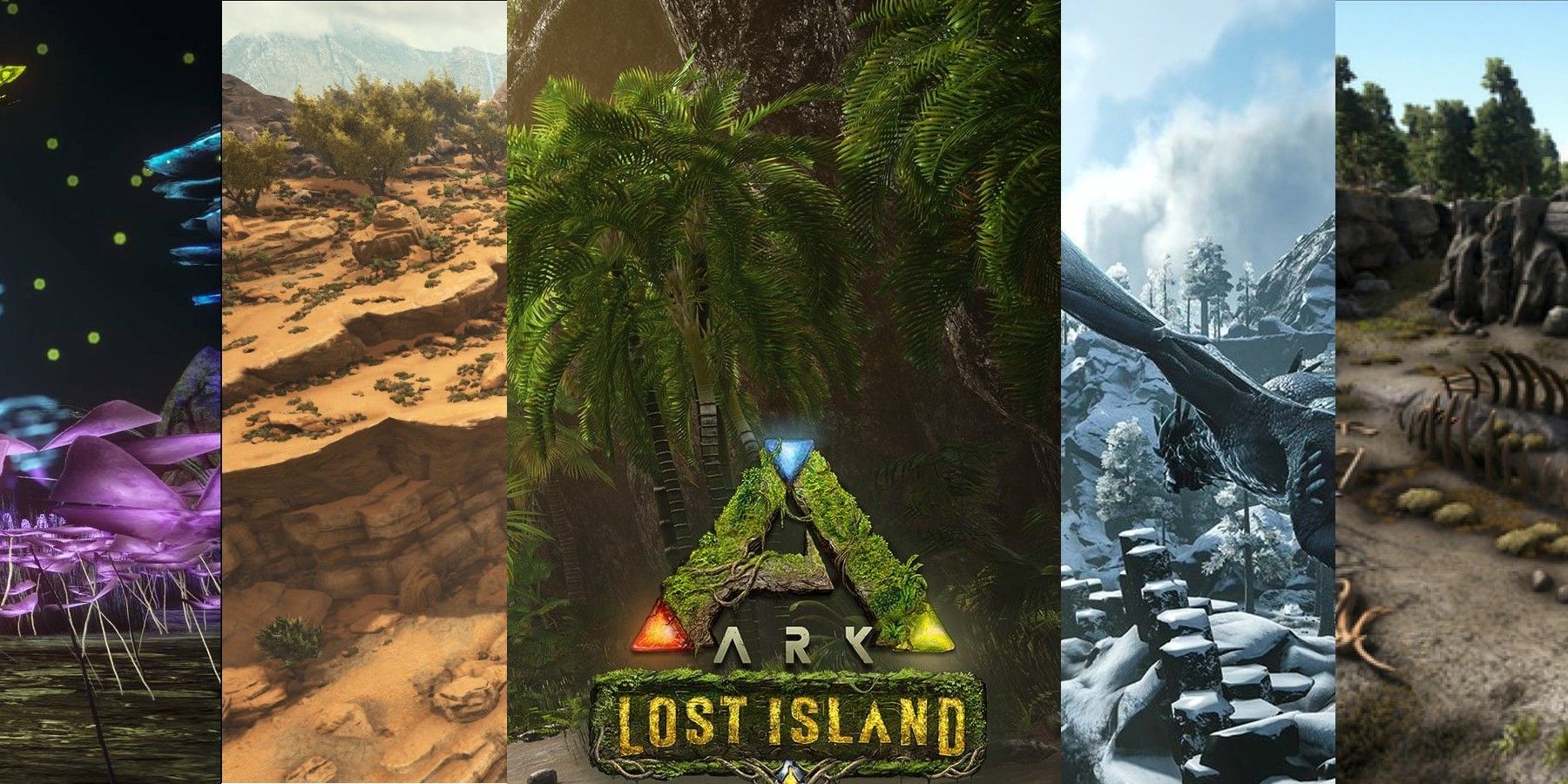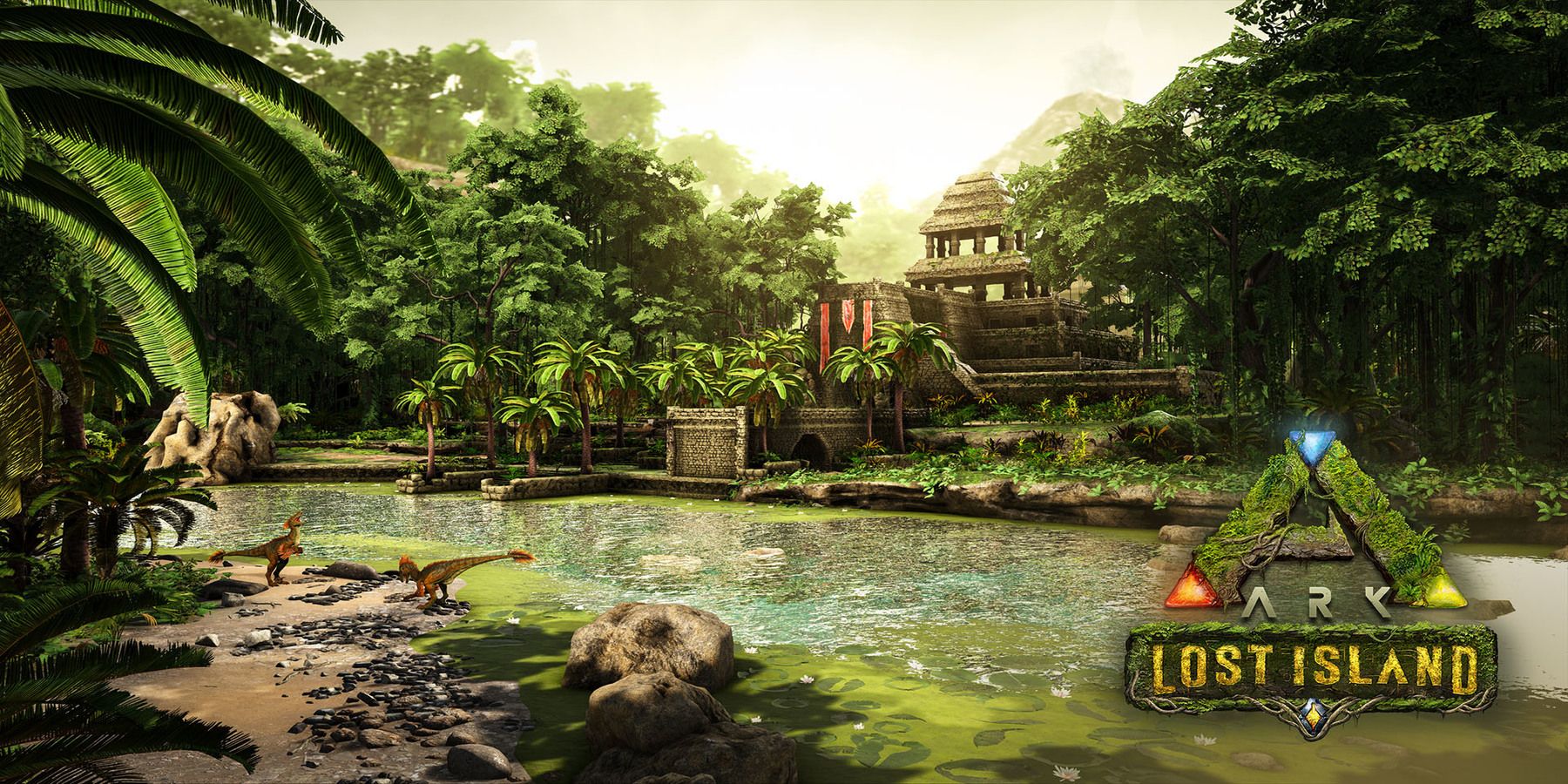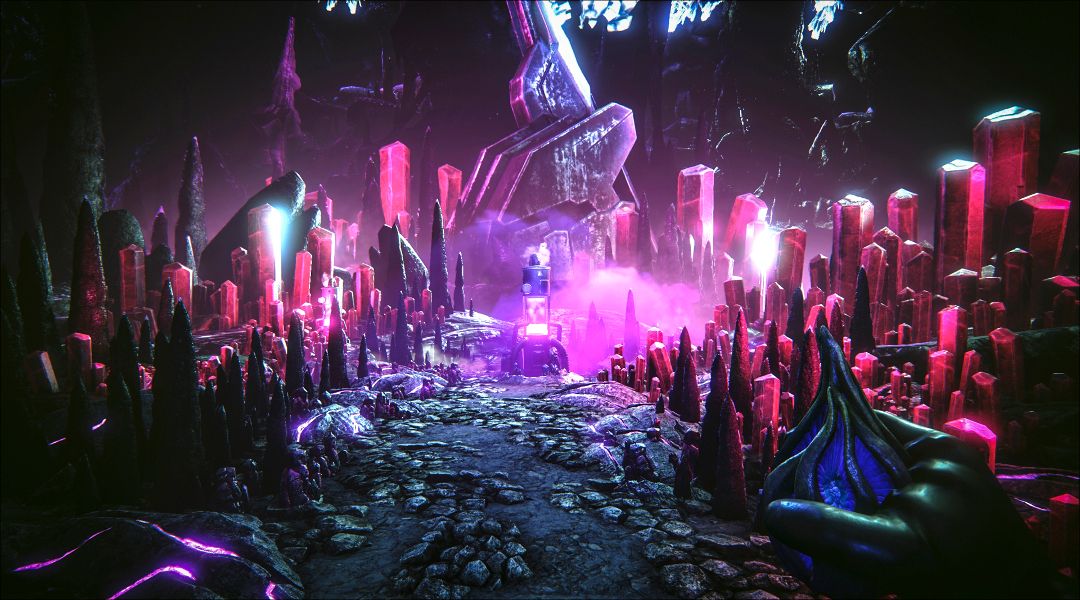ARK: Survival Evolved has explored a variety of environments throughout its various open-world maps. These include dry deserts, snowy plains, flourishing grassy lands, and underwater biomes. With eleven different locales, ARK covers most naturally existing environments, along with science-fictional landscapes such as the ones seen in Extinction, Aberration, and Genesis.
While in the past new maps have offered completely different lands to explore compared to previously released ones, the newest ARK map is a combination of all those that have come before it. Lost Island, released in early December, is one of the largest maps to date, spanning 150 square kilometers. Although Studio Wildcard introduced the map with three new creatures, there is not necessarily a lot new about the landscape itself.
How Lost Island Compares to Other Maps
Lost Island resembles maps such as The Island, Ragnarok, and Crystal Isles, with sandy beaches bordered by sea on one side and jungle on the other. Looking away from the sea, jagged mountains fade off into the distance, capped with pockets of snow. There are a number of caves scattered across the map, some small and others opening into large underground systems. Looking on the player map, Lost Island is surrounded by ocean and flanked by a section of sand-colored land across the southern section of the map. Old ruins can be found dotted all over, reminiscent of the ruins found on the Center and Ragnarok, such as castles and jungle temples.
The pale stretch of land in the southern part of the map represents a desert biome, much like the ones found on Scorched Earth, Ragnarok, and Extinction. Like Ragnarok, this biome contains artifacts in the “Labyrinth Cave,” which is a long tunnel system consisting of deadly traps that players must avoid at all costs. The artifact waiting for players who manage to bypass these Indiana Jones-style barriers is worth the peril, as they are crucial for activating boss fights.
Lost Island also includes an Aberration zone; a weird and deadly underground world otherwise limited to the Aberration, Valguero, and Genesis 2 maps. Although Lost Island’s zone is fairly small compared to the other DLCs, it provides a spawning point for famous Aberration tames such as the Basilisk, Glowtail, and Ravager. There are also five different creatures that spawn as the Aberrant variants, including the Raptor and Carnotaurus. As the Aberration zone on this map is small, the entrance is somewhat concealed, making it hard to find without a GPS or reference video.
Above ground, Lost Island shares certain similarities with the Ragnarok and Valguero DLCs. The most noticeable thing is the smouldering volcano that can be found in the Northeast corner. Like Ragnarok, this volcanic biome covers a large area with blackened ground, decorated with lava streams and dangerous creatures. There are also two Wyvern trenches toward the Northeast region of the map, including an Ice Wyvern trench that can otherwise only be found on Valguero. Along with the Wyverns, Lost Island provides spawn points for Griffins, meaning players no longer need to go to either Ragnarok or Crystal Isles to tame them.
Although there are no new environmental biomes added to the Lost Island DLC, it is remarkable to see most biomes that exist on previous maps rolled into one across an overall area that dwarfs its predecessors. Having access to most map-exclusive tames without transferring off server should also make life much easier for ARK players in a world wear Managarmrs and Wyverns spawn side-by-side.
ARK: Survival Evolved is available now for Mobile, PC, PS4, PS5, Switch, Xbox One, and Xbox Series X/S.



